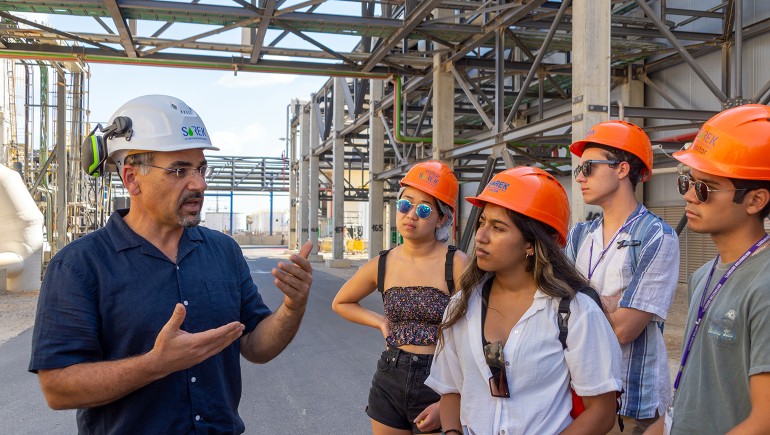Almost every day, new evidence of a global water crisis emerges.
The second-largest water reservoir in the United States, Lake Powell, seeped to its lowest level in nearly 60 years this past winter. The picturesque canals of Venice ran dry, while France went more than a month without significant rainfall.
Meanwhile, drought conditions around the world continue to threaten agriculture, wildlife and public health.
The global water supply is at risk, and the crisis seems to be accelerating faster than solutions can be developed. And yet remedies are emerging — in particular, through CoWERC, a global collaboration co-founded by scientists at Northwestern’s Center for Water Research and in Israel, a nation long at the forefront of water innovation.
After sounding the alarm on its shrinking freshwater supply more than a decade ago, Israel now desalinates about 75 percent of its drinking water from the Mediterranean Sea. It is also the global leader in reclaiming its wastewater, repurposing almost 90 percent for agricultural irrigation and other purposes.
These advancements are a key focus of Northwestern’s annual Global Engineering Trek to Israel (GET), an annual study-abroad trip co-organized by the University’s Israel Innovation Project and the Center for Water Research and supported by McCormick Global Initiatives and the Institute for Sustainability and Energy at Northwestern (ISEN). The trek enables undergraduates to travel to Israel to learn about the latest advancements in sustainable water management.
“It was amazing to me that Israel was able to implement practical solutions [to its water crisis] so quickly,” said Peter Pinder, a junior majoring in civil engineering who traveled to Israel on the GET trip last fall. “Their ability to create change and turn this issue around so that they are now a global leader in this area is quite impressive.”
A complete view of the water-energy system
CoWERC — the U.S.-Israel Collaborative Water-Energy Research Center — was founded three years ago by Northwestern and Ben-Gurion University of the Negev in Israel.
“We have a wide range of expertise, so we have the ability to take a pretty broad view and then focus on the most impactful work,” said Aaron Packman, co-director of CoWERC and director of the Center for Water Research.
Water and energy are inextricably linked, said Packman, a professor of civil and environmental engineering at the McCormick School of Engineering. The purification and distribution of water require significant amounts of energy, while water, in turn, is essential to the production of energy. And wastewater itself contains a substantial amount of energy.
Innovations and efficiencies in any of those processes can have an exponential impact on the cycle, generating more water for human consumption and agriculture and more energy for a variety of other purposes.
Turning wastewater into energy
Wastewater may not be potable, but it does contain nutrients. It’s also full of energy that can be used for other purposes.
That’s why George Wells, associate professor of civil and environmental engineering, and his team are working to change the way we view wastewater — from mere “sewage” to something that can be used for energy, fertilization and other purposes.
The Wells lab is developing a new technology called CANDO+P that can recover nutrients from wastewater while producing clean water for reuse. This process removes nitrogen in a manner that allows it to be used for bioenergy, while phosphorus is recovered in a form that can be reused as fertilizer.
Innovative approaches like CANDO+P have an enormous potential to lower the barriers to wastewater reuse, Wells explained.
“These new technologies ultimately provide a path toward a truly circular water economy,” he said. “That vision is vitally important not just to Israel and the U.S., but to sustainable water stewardship worldwide.”



